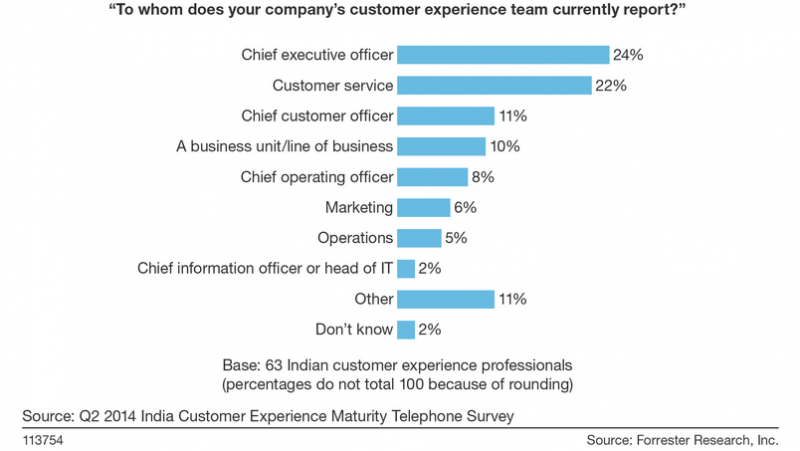Indian Firms Have The Wrong Customer Experience Reporting Structure
While analyzing the survey results for my recent report on the state of customer experience management in India, I noticed a fundamental flaw in the way that Indian organizations approach reporting structures for their customer experience (CX) teams. About a fifth of the organizations we surveyed rely on their customer service department to lead the charge for CX initiatives.

This is detrimental to the growth of CX, as there are basic differences between the scope of work and the skill sets of the two teams. Specifically, customer service teams have limited capabilities and exposure across:
- People. While both CX and customer service teams work toward enhancing the experience across the customer life cycle, the customer service team has a somewhat myopic view of customer engagement, focusing predominantly on handling client complaints and resolving queries.
- Processes. Forrester defines customer experience as how customers perceive their interactions with a company. The contribution of customer service teams to this process is limited to supporting customer tasks in a few phases of the journey.
- Tools. Customer service professionals are responsible for the experience delivered via multiple touchpoints, such as IVR systems, contact centers, and social media. However, other equally important customer interfaces, such as mobile applications, digital kiosks, and eCommerce platforms, fall outside their purview.
In their book Outside In, Forrester analysts Harley Manning and Kerry Bodine argue that: “People call customer service when they have a problem. So equating customer service with customer experience is like saying that a safety net is a trapeze act. Yes, the net is important to the act. But if the performer needs to use the net then something has gone wrong with the show.” This means that the relationship between these two teams should also be the other way around, with the customer service team reporting into the CX team.
Ideally, CX teams should report into and have the support of the most senior business leader, such as the CEO, to get the resources and investments they need to deliver on their goals. The greater their distance from the seat of power, the lower their visibility and recognition; this may jeopardize future CX investments and the team’s credibility in the long run. Driving CX excellence is one of the top business priorities in India, but failing to empower your CX teams will make it impossible for them to excel at their job of building a customer-centric organization.